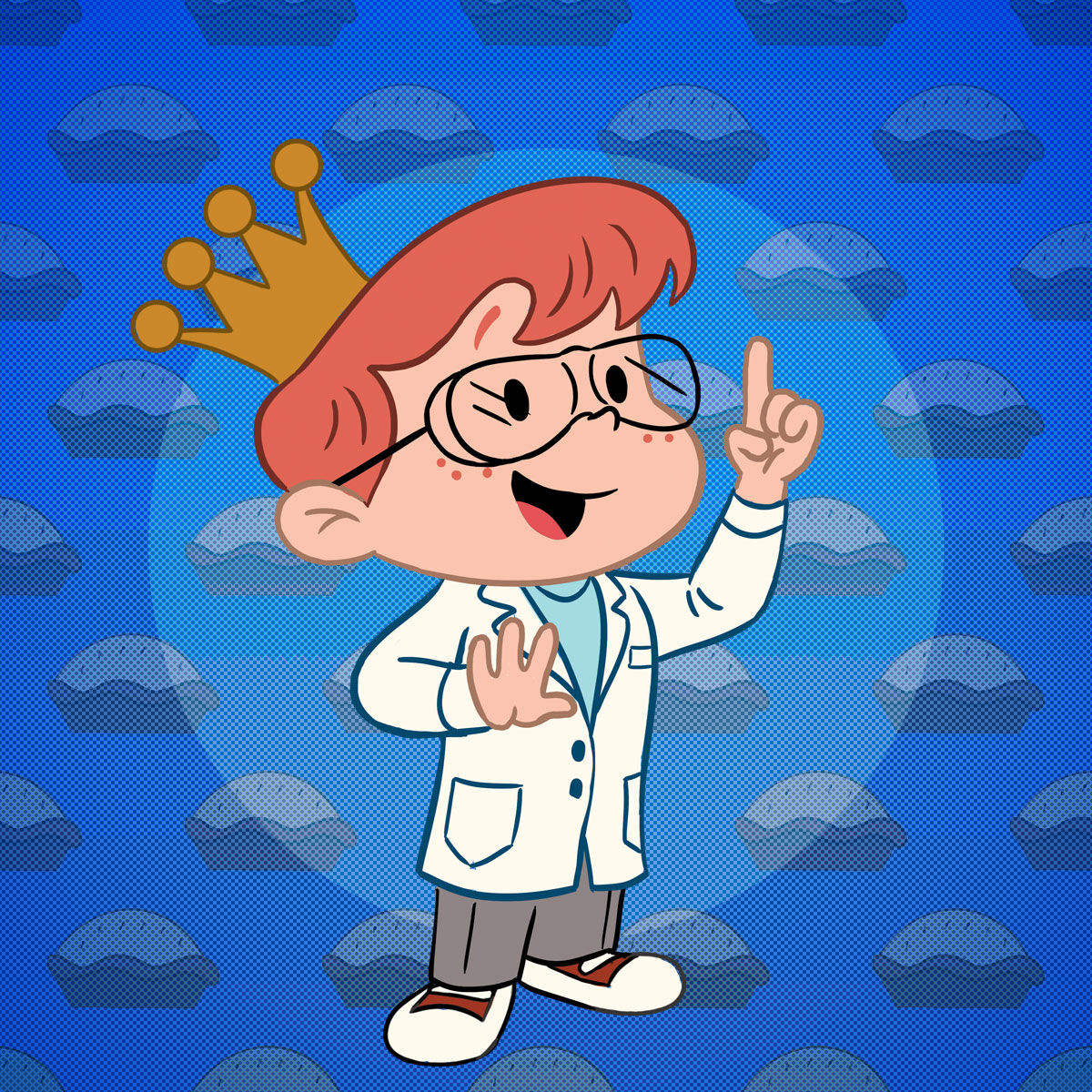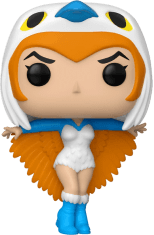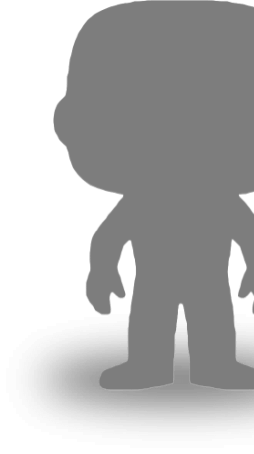Grab a lab coat and safety goggles! We’re popping into the laboratory for a behind-the-scenes look at what goes into making a Funko Pop! vinyl figure or collectible. How are Pops! sculpted? How are they engineered? What factors do Funko sculptors and engineers consider when creating a figure?
Check out some of the processes and other elements that go into making a Funko Pop! below. We’re sharing quotes from a few of our sculptors and engineers that reveal their insights and perspectives. Then, stick around for some Pop! science-y experiments and activities you can do at home. Don’t forget to check out our store to shop Sci-Fi and other science-related collectibles from television and movie fandoms. Let’s go!
Pop! Process
Funko creations pop into being in many different ways—from conception to completion. A lot goes into the process. Today, we’re focusing on the sculptors and engineers, but there are many innovative teams and individuals at Funko who make things happen.
Where to Start?
“As we start a project, everyone on the team works together to review the character and their size in that world; are they a full-grown adult, a young child, or a massive behemoth monster? There are also cases when a character doesn't fit into those usual categories. We work together and discuss the different proportions. That then drives forward the concept artist and sculptor to plan all the proportions, in line with the set standard of past figures.”—Ryan Frost, Sculptor
Fit for Fun
“Of course, the figure also has to fit in the box. The packaging designer has an important role on the team, as they use math to plan out box dimensions to work together in a line, while also giving enough room for the figure. Sculptors also have to make sure the figure is within the limits of the packaging, while the production manager makes sure everything works together, according to the goal.”—Ryan Frost, Sculptor
The Role of the Funko Engineer
“The Funko engineers help identify how new product will be molded, which materials will be used in production, how figures should be sculpted to make them moldable. We also do things like adding joints, hinges, and pegs to aid in assembly and to give our product function.”—Ben Velasquez, Sr. Toy Sculptor
Materials
“There’s a lot that goes into Pops! that might not be so obvious at first glance. We have to consider how they are made and what materials are used so they can be produced. Different plastics have different properties and choosing the right ones can mean the difference between success and failure. Figuring this stuff out at the beginning of a project, saves time, money, and gives us the most control to make the final product look like the characters we love.”—Mo Flint, Sr. Toy Sculptor
“We have to have knowledge about the different materials being used because each has its own strengths and weaknesses. For example, ABS (Acrylonitrile Butadiene Styrene) plastic is a very hard, durable plastic. However, the molding process is pretty unforgiving. If there are ‘undercuts’ on the figure (or areas that have protrusions, holes, or recesses), then the steel mold will damage the plastic during de-molding. PVC (Polyvinyl Chloride), on the other hand, is a softer material where undercuts are not such a big issue because there is ‘give’ on the plastic, and it can be pulled out of a mold even with some undercuts. Overall, the engineers help to ensure that a figure can be produced up to Funko's high standards.”—Ben Velasquez, Sr. Toy Sculptor
Finishing Touches
“Have you ever noticed that there are no seams on the sides of a Pop’s head? That’s because they are roto-molded in a material that can come out of a special type of mold that doesn’t have seams. We need to be very careful that the details are sculpted in a way that will allow them to come out of a steel mold in production.
Just as there are different plastics and mold types, there are also a variety of ways to apply paint, which we call a deco. Some decos are applied with a stamp made from a super soft rubber. They can create very detailed shapes but work best on smooth surfaces. When we need to paint on large or heavily sculpted areas, we might spray on the color and use a hand-cut mask to keep the paint where it needs to go.”—Mo Flint, Sr. Toy Sculptor
Math, Balance, and Symmetry
“Thankfully, there are very convenient sizing-check tools included in the program we use that allow us to make sure our figures don't 3D print out at 10 feet tall or 1 inch! Sizing is one of the most important steps of our process as everything revolves around the average height of 3.74", roughly, for Pops! and various sizes for our other figure lines.
But we also all use math to build on top of each team member's role in order to get the final figure you see on your shelf!”—Ryan Frost, Sculptor
“We try to keep balance in mind. Some Pops! will just need to have a base. For the most part, having the feet under the center of gravity will help a figure balance. If there is a lot of hair on the back of the head, we can sometimes shrink the depth of the Pop! head to make it not so back heavy. We can get a good idea of balance by looking at our figure from the bottom view and seeing if the feet are centered below where the center of gravity is for the head.”—Carla Peña, Associate Sculptor
“Symmetry is also a unique aspect of our work we probably take for granted. Almost everything we make is symmetrical at one point and essentially allows us to only have to sculpt half the piece. Every bicep that you sculpt will count for the other side as well. Every pocket, tire, or screw can be mirrored to the other side. We even use rotational symmetry from time to time. For things like the spokes on a tire or petals on a perfect flower, we can use rotational symmetry to align evenly. Then, when finalizing our sculpts, we will sometimes break that perfect symmetry to give our work just a little more life, as few things in the real world are actually perfectly symmetrical.”—Colin Dixon, Digital Sculptor
What Skills Do You Need to Work on a Funko Pop!?
“Curiosity and the desire to put in the time to figure things out are key.”—Mo Flint, Sr. Toy Sculptor
Activities for Celebrating Pi Day
Funko fans come from all walks of life, and we found a few at the University of Washington Bothell’s Physics Club! They’re celebrating Pi Day with games and a pizza pie. The president of the club even took Pop! Freddy Baseball on a few science-y adventures. Let’s take a look!
Estimate the Volume of a Funko Pop! in Water
For this experiment, you’ll need the following items:
--Glass jar
--Water
--Measuring tool (ruler or measuring tape)
--Small bits of tape
--Funko Pop! (for this experiment, Pop! Freddy Funko (baseball) was used)
Instructions:
--Place your Pop! into the jar without water.
--Fill the jar with water. You may need to place your finger on the top of the Pop! to keep it from floating up when filling the jar. (Not all Pops! float, but a few do.)
--Use a bit of tape to mark where the water line at the top of the jar is.
--Take the Pop! out of the water. You will notice that the water level lowers. Use another bit of tape to mark where the new water line is.
--Using your measuring device (ruler or measuring tape), measure (in centimeters) the distance between the bottom of the jar and each mark of tape. You should have two measurements.
--Subtract those two numbers and write the new number down. Keep that number handy for later on.
--Measure the diameter of the glass jar in centimeters next. (Just measure across the top of the open circle.)
--Now, you get to use pi in a formula on Pi Day! To determine the volume, use this formula: v=πr²h
In this case, the diameter, divided by two, is squared, then multiplied by pi, then multiplied by the difference between the measurements in the two marks of tape.
So, if the diameter of the jar is 8 cm, and the difference between the two marks of tape is 3.5 cm, your formula will look like this: 8/2 X 8/2=64/4=16 X 3.14=50.24 X 3.5=175.84 cubic centimeters (volume)
Based on the formula above, the president of the University of Washington Bothell’s Physics Club determined that about 2.3 billion Pop! Freddy Funko (baseball) collectibles might fill Funko Field!

Slide into Home!
How many pencils does it take to get Pop! Freddy Baseball to start to slide across the table? The president of the physics club at UW Bothell posed this question, then tied a string around Pop! Freddy Funko’s middle—and about 3.14 pencils to the other end of the string—and Pop! Freddy began to slide.
You can do the same thing at home. How many pencils does it take to get your Pop! to start to slide across the table?
Fun Fact: UW Bothell’s physics club president “guestimated” that it might take about 5-6 pencils to get Pop! Freddy Baseball to start to go down a playground slide with a 30° angle.
Other Ways to Celebrate:
--From John Smokowski (Sr. Toy Sculptor at Funko): Take your favorite Funko bobblehead and see if you can get it to bobble more or less precisely 3.14 times.
--Bake a pie or enjoy a slice from your favorite bakery.
--Donate to a favorite science-related cause.
--Watch your favorite science documentaries or Sci-Fi movies.
--Shop a Pop! that celebrates your favorite Sci-Fi or movies and television fandoms!













 Items in your cart may be affected with updated location.
Items in your cart may be affected with updated location.




































